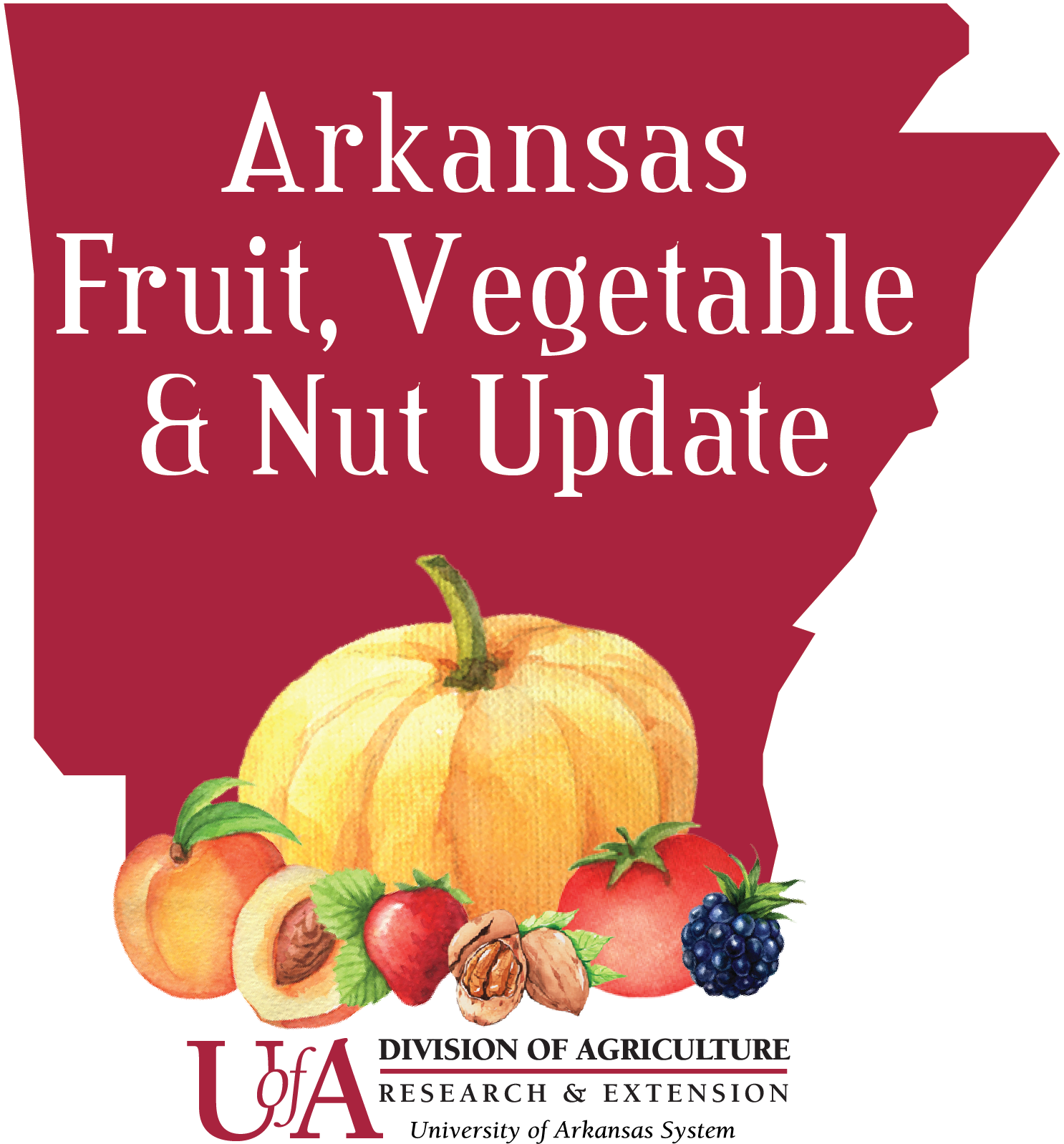
2016-2017 Winter Cover Crop and Watermelon Trial Results in Hope, Arkansas
The farmer’s mindset is to constantly look for ways to improve crop yield and profit while maintaining or improving soil conditions. It is because of this attitude that the interest and incorporation of cover crops has grown significantly in recent years. The University of Arkansas Cooperative Extension Service conducted a dryland (non-irrigated) winter cover crop trial in 2016 and established a watermelon crop the following spring with the goal of collecting preliminary data for farmer recommendations.
The field trial was conducted at the University of Arkansas Southwest Research and
Extension Center (SWREC) in Hope, Arkansas. The cover crop mixture was comprised of
the species winter rye and Austrian winter pea. Fruit yield, weed biomass production,
weed species present, soil moisture accumulation, spider mite count were all evaluated.
The cover crop was established on October 19, 2016 and terminated in April 2017. Watermelon
seedlings were transplanted following cover crop termination on May 2, 2017. The research
site was established on a fine sandy loam soil and located in Hardiness Zone 8 with
an average annual rainfall of 55 inches.
Trial Design and Management Specifications
- Designed with two plots of equal size (30’ x 70’) with one planted in winter cover
crops and the other left in bare ground (conventional plot) during the winter of 2016
- Cover Crop was established October 19, 2016
- Seeding rate for the cover crop consisted of 50 lbs. winter rye and 10 lbs. Austrian winter pea/acre
Cover Crop Seedlings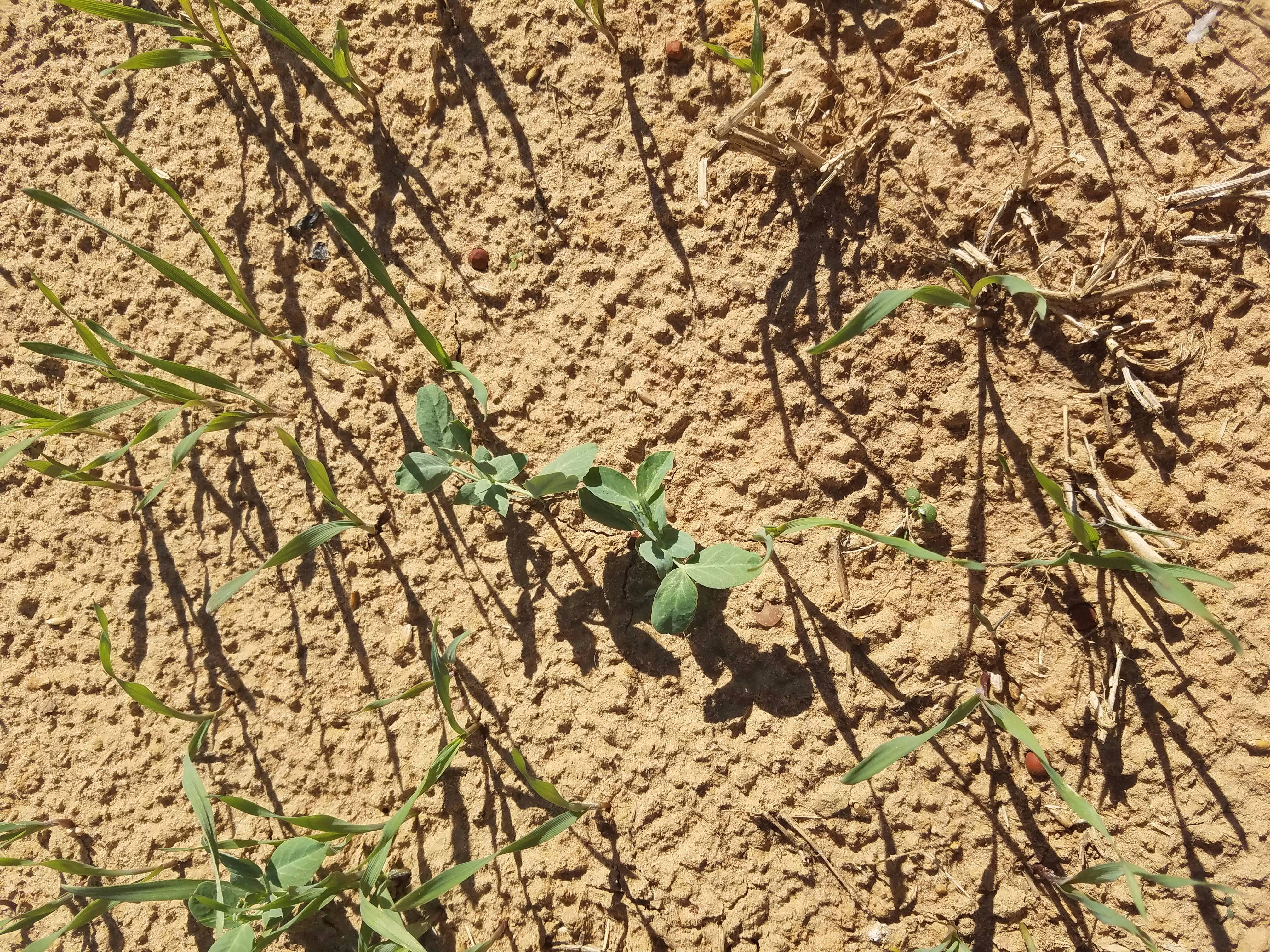
Photo: Amanda McWhirt
- Glyphosate was used to terminate the cover crop in April 2017 at a rate of 1 qt. /acre
Cover Crop Plot during Termination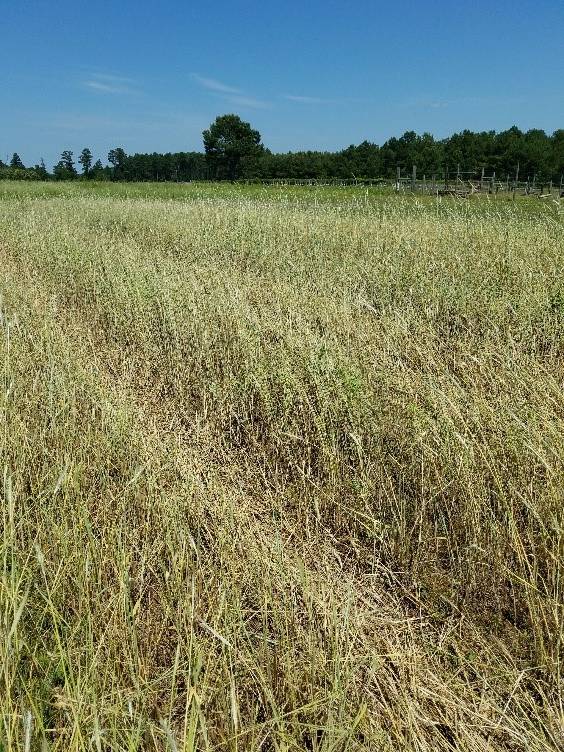
Photo: Amanda McWhirt
- Dual-Magnum pre-emergent herbicide was applied to the conventional plot in April at a rate of 1 pt. /acre
Conventional Plot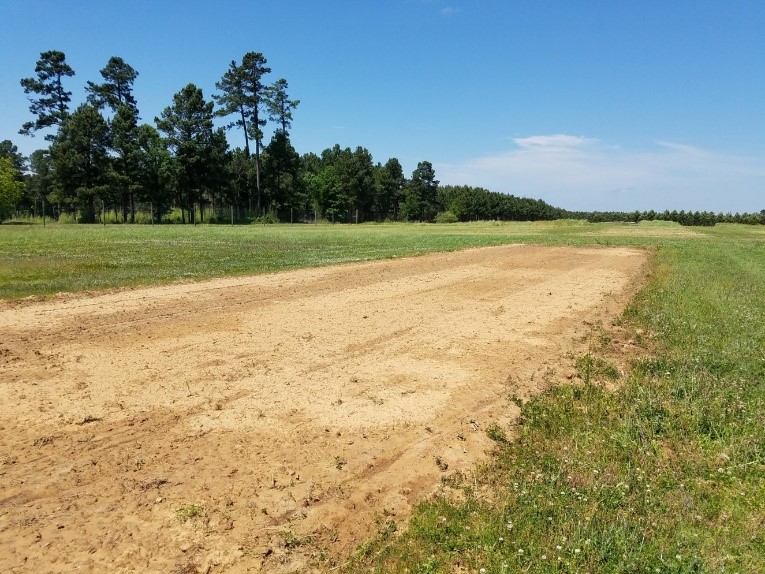
Photo: Amanda McWhirt
- Nitrogen fertilizer at a rate of 60lbs/ acre was applied to each plot in spring 2017 before transplanting the watermelon
- Jubilee watermelon seedlings were transplanted May 2, 2017
- Plant leaves were collected and inspected for two spotted spider mite presence on June 27 and July 6, 2017
- Watermelon crop died late July/August as a result water deficiency
- Watermelon fruit count was taken on August 2, 2017
- Weed biomass and soil moisture samples were collected on August 2, 2017
Weed Biomass Replication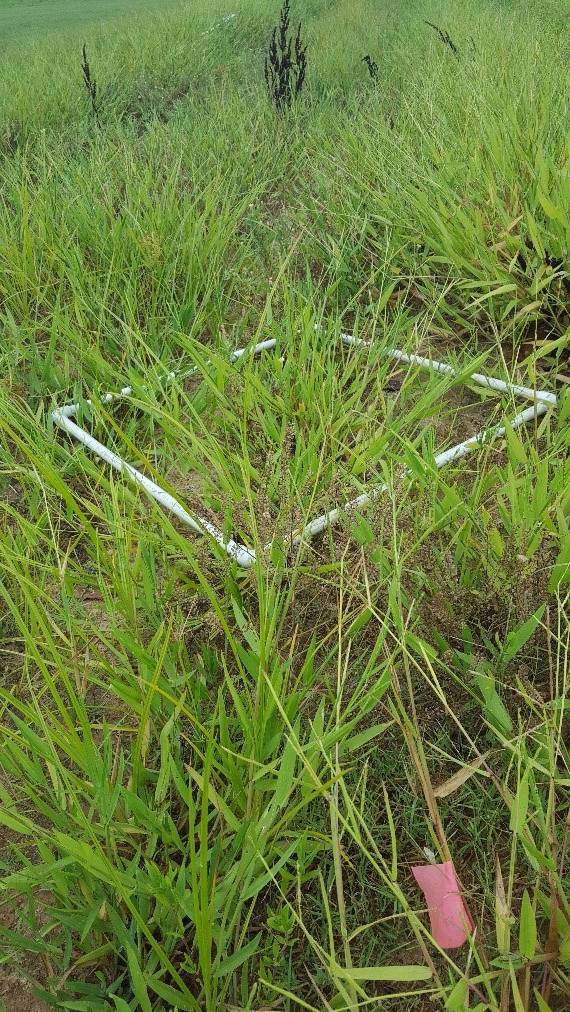
Photo: Matthew Bean
Results between Treatments
Early Vine Growth In the weeks after transplanting the watermelons into the burned down cover crop plots and the bare ground conventional plot we saw some differences in vine growth and weed pressure, where the vines tended to be more vigorous and weed pressure was less in the cover crop plot.
Cover Crop Plot
Conventional Plot
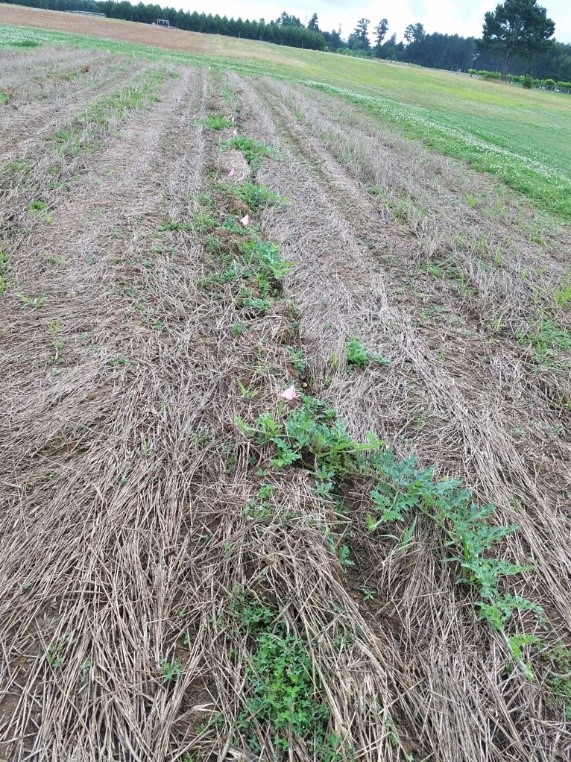
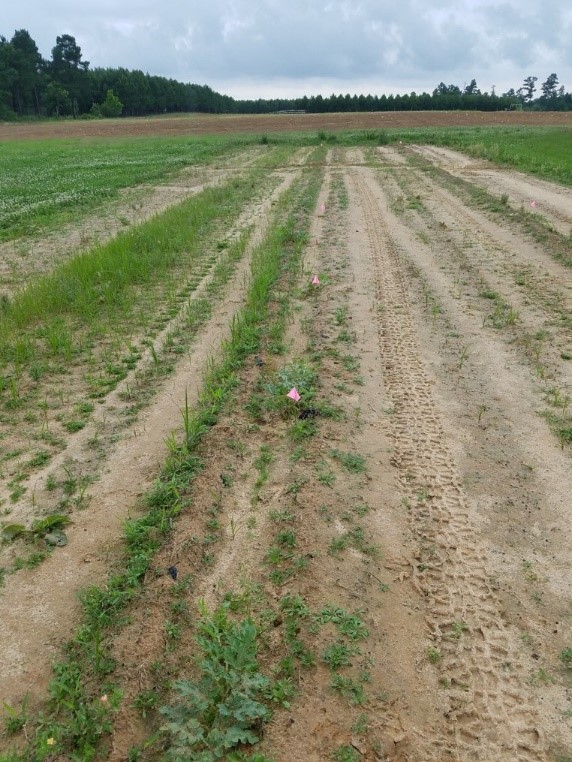
Photos:
Amanda McWhirt
Fruit Yield Unfortunately, the lack of rain received during the watermelon fruit growing stage resulted in stunted plant growth and subsequently plant death before fruit could be harvested. A fruit count was recorded before fruit decay and no difference was observed between the cover crop and conventional treatment (10 melons per treatment).
Cover Crop Plot with Watermelon Fruit Conventional Plot with Watermelon Fruit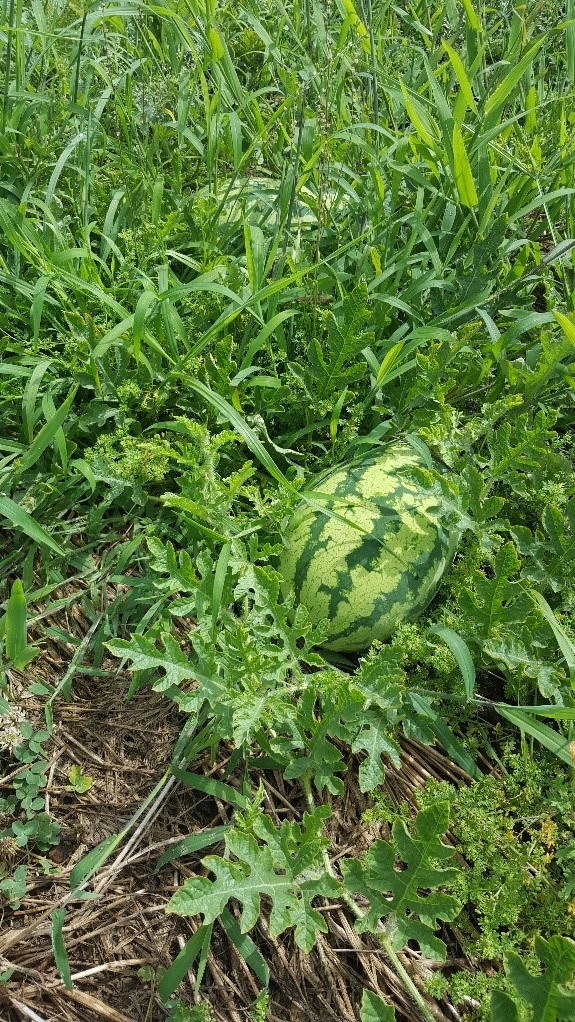
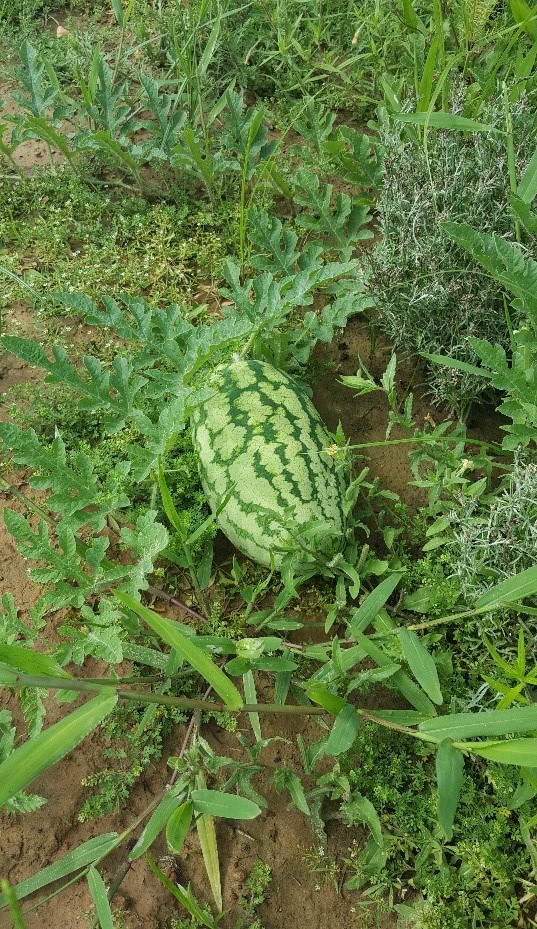
Photos: Matthew Bean
Weed biomass was sampled and species determined at three replications per treatment and dried in an oven before a net weight was recorded and the average analyzed. The results (Figure 1) displayed that the cover crop treatment had a significantly lower weed biomass (550 g/yd2) compared to that of conventional tillage (832 g/yd2). This can be seen to some degree in the pictures below where the burned down winter ryegrass in the cover crop plots can still be seen providing some soil cover well into July. There were no differences in what types of summer weeds were found in the cover crop plot compared to the conventional plot. The types of weeds in the plots were: Carolina false dandelion, Bermuda grass, crabgrass, nutsedge and swine cress.
Figure 1. Weed biomass data from 2016-2017 Winter Cover Crop and Watermelon Trial
in Hope, Arkansas
Cover Crop Plot with Weed Biomass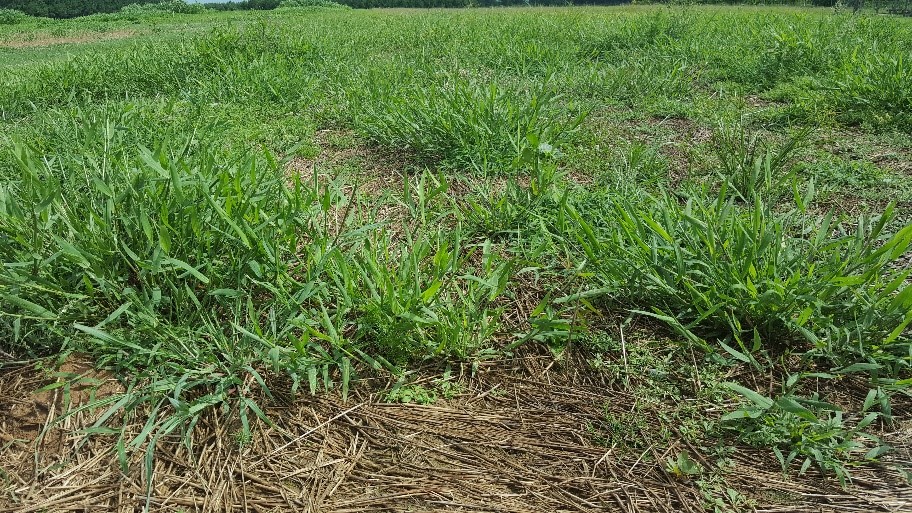
Conventional Plot with Weed Biomass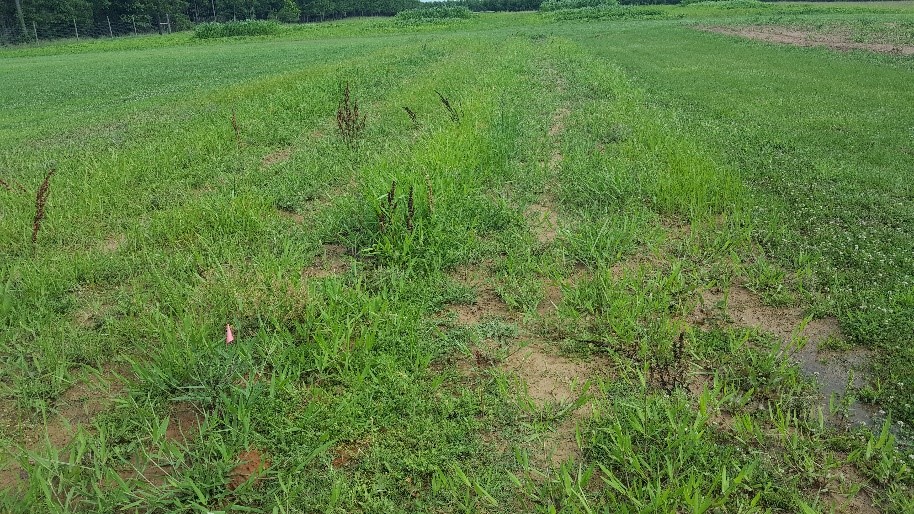
Photos: Matthew Bean
Carolina False Dandelion Burmudagrass
Crabgrass
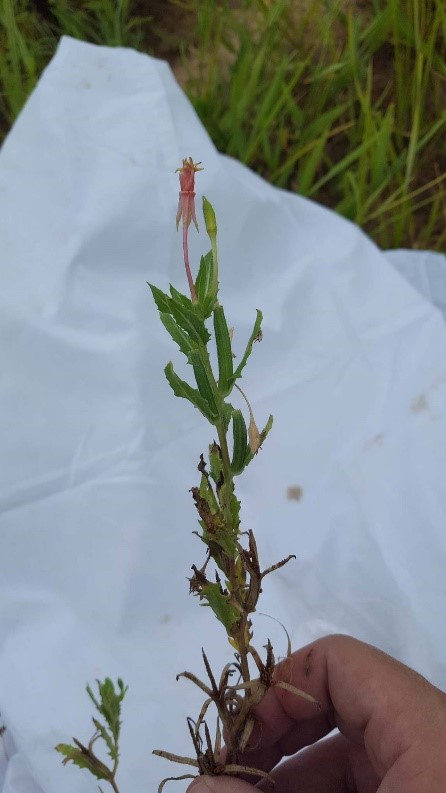
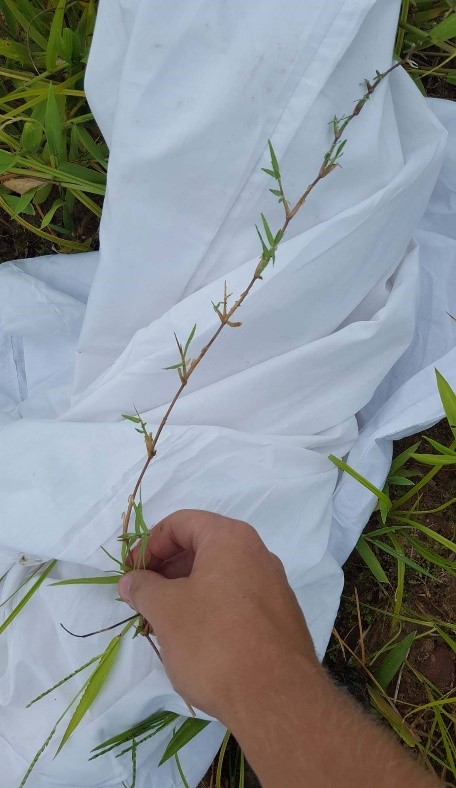

Nutsedge
Swine Cress
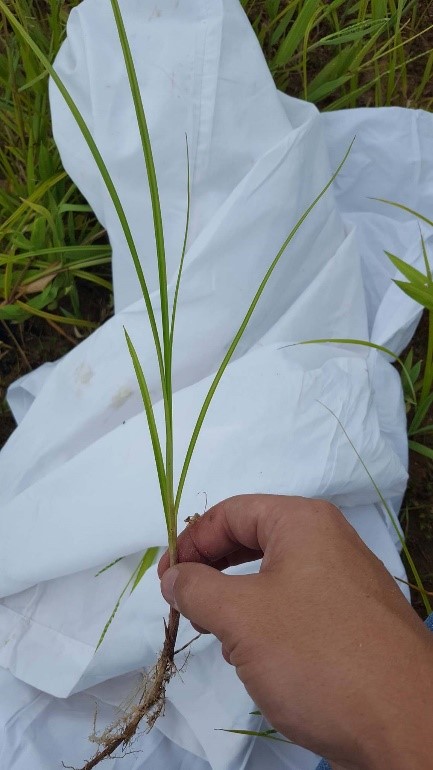
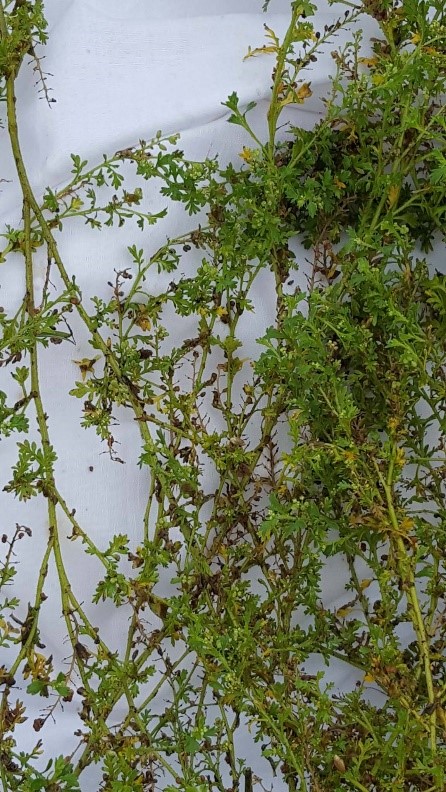
Photos:
Matthew Bean
Soil moisture samples were collected with a soil push probe the same time as the weed biomass samples and dried in an oven for analysis. The samples were analyzed on a percentage basis and no differences were observed between the treatments.
Watermelon leaf samples were collected two different times during the growing season
and examined for mite presence; but, none were present.
Conclusions
The preliminary results indicate that a winter cover crop is beneficial for weed suppression and does not deplete soil moisture content any more than the conventional method. A watermelon fruit weight could not be taken, however, the treatments contained the same fruit count, which indicates that a cover crop system could possibly maintain the same yield, while decreasing weed issues.
One consideration that should be taken is that this trial was non-irrigated and only received rainfall for its water supply. Due to this being a wet year rainfall led to good vine growth, until several weeks of hot dry weather occurred just prior to final fruit development. It is believed that the results would be different if irrigation was supplied during the watermelon growing season and thus will be investigated in multiple locations across the state in 2017-2018.
A lack of regular irrigation likely led to some observance of blossom end rot on the watermelons. This is related to a lack of calcium in the plant that often results from irregular irrigation or fluctuations in moisture.
Watermelon Blossom End Rot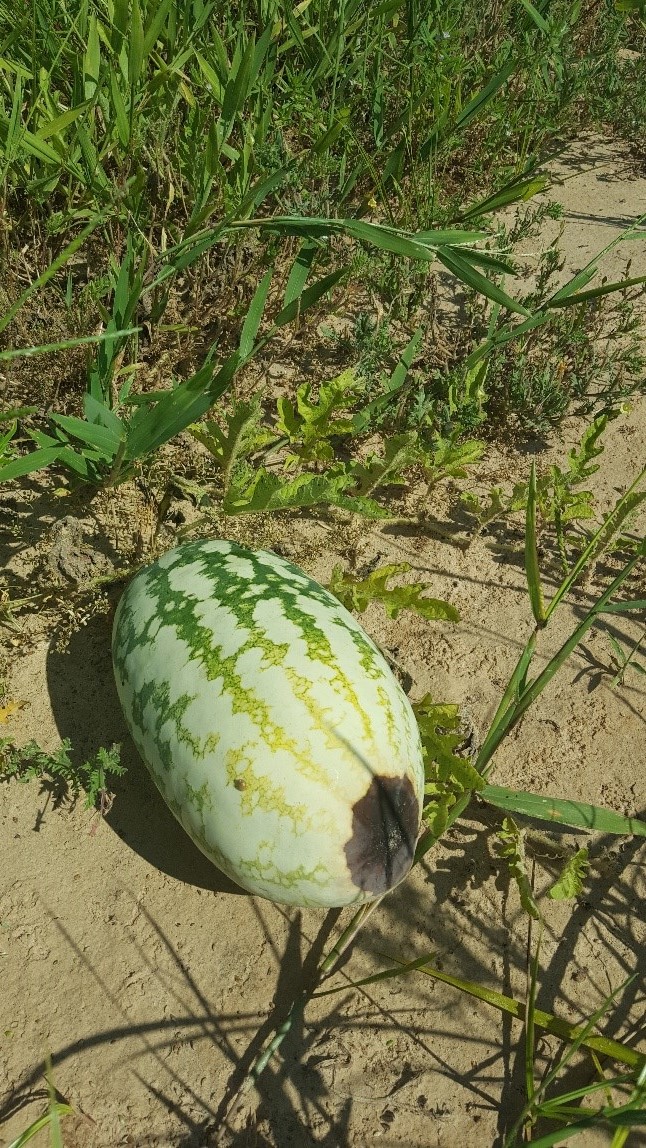 Photo: Matthew Bean
Photo: Matthew Bean
A special thank you is owed to Clay Wingfield, Mike McCorkle, and Vicki Bennett at the SWREC for their help in managing this ongoing trial.